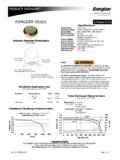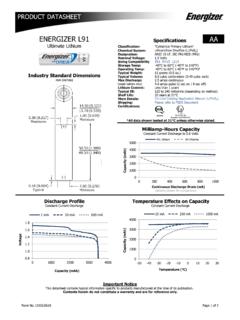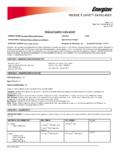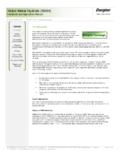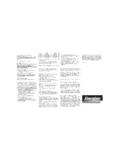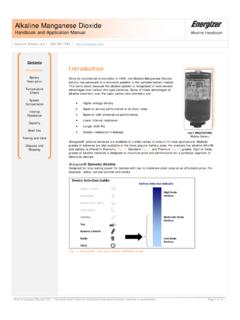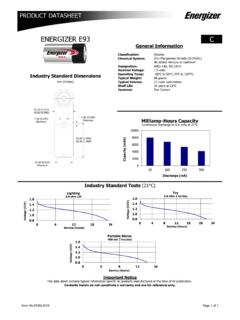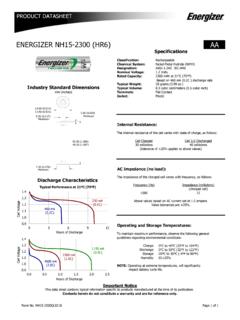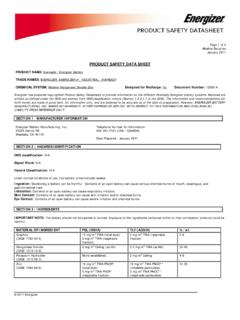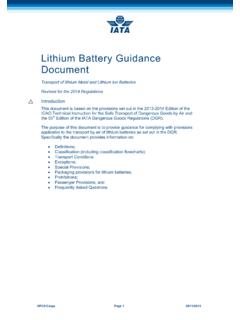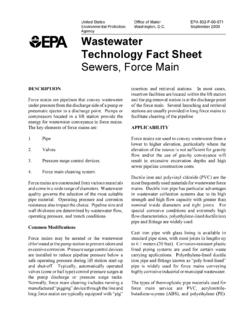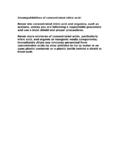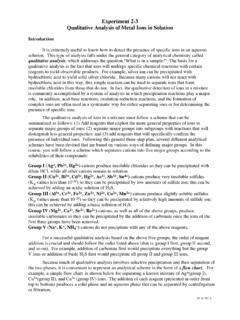Transcription of PRODUCT SAFETY DATA SHEET
1 Page 1 of 5 Lithium Iron Disulfide Batteries January 2017 2017 Energizer PRODUCT SAFETY DATA SHEET PRODUCT NAME: Energizer Battery Type No.: L91 (AA), L92 (AAA) Volts: TRADE NAMES: ULTIMATE Approximate Weight: g. (L92) 15 g. (L91) CHEMICAL SYSTEM: Lithium Iron Disulfide Designed for Recharge: No Document Number: 12003-A Energizer has prepared copyrighted PRODUCT SAFETY Datasheets to provide information on the different Eveready/Energizer battery systems. Batteries are articles as defined under the GHS and exempt from GHS classification criteria (Section of the GHS). The information and recommendations set forth herein are made in good faith, for information only, and are believed to be accurate as of the date of preparation.
2 However, ENERGIZER BATTERY MANUFACTURING, INC. MAKES NO WARRANTY, EITHER EXPRESS OR IMPLIED, WITH RESPECT TO THIS INFORMATION AND DISCLAIMS ALL LIABILITY FROM REFERENCE ON IT. SECTION 1- MANUFACTURER INFORMATION Energizer Battery Manufacturing, Inc. Telephone Number for Information: 25225 Detroit Rd. Westlake, OH 44145 800-383-7323 (USA / CANADA) Date Prepared: January 2017 SECTION 2 HAZARDS IDENTIFICATION GHS classification: N/A Signal Word: N/A Hazard Classification: N/A Under normal conditions of use, the battery is hermetically sealed. Ingestion: Swallowing a battery can be harmful. Inhalation: Contents of an open battery can cause respiratory irritation.
3 Skin Contact: Contents of an open battery can cause skin irritation. Eye Contact: Contents of an open battery can cause severe irritation. SECTION 3 - INGREDIENTS IMPORTANT NOTE: The battery should not be opened or burned. Exposure to the ingredients contained within or their combustion products could be harmful. MATERIAL OR INGREDIENT PEL (OSHA) TLV (ACGIH) %/wt. Carbon Black (CAS# 1333-86-4) mg/m3 TWA mg/m3 TWA 0-4 1,2 Diemethoxyethane (CAS# 110-71-4) None established None established 2-4 1,3 Dioxolane (CAS# 646-06-0) None established 20 ppm TWA 5-9 Graphite (CAS# 7782-42-5) 15 mg/m3 TWA (total dust) 5 mg/m3 TWA (respirable fraction) 2 mg/m3 TWA (respirable fraction) 0-4 Iron Disulfide (CAS# 1309-36-0) None established None established 28-38 Lithium or Lithium Alloy None established None established / AA / AAA Lithium Iodide None established None established Page 2 of 5 Lithium Iron Disulfide Batteries January 2017 2017 Energizer Non-Hazardous Components Steel (iron CAS# 65997-19-5)
4 Plastic and Other None established None established None established None established 18-22 Balance SECTION 4 FIRST AID MEASURES Ingestion: Do not induce vomiting or give food or drink. Seek medical attention immediately. CALL NATIONAL BATTERY INGESTION HOTLINE for advice and follow-up (202-625-3333) collect day or night. Inhalation: Provide fresh air and seek medical attention. Skin Contact: Remove contaminated clothing and wash skin with soap and water. Eye Contact: Immediately flush eyes thoroughly with water for at least 15 minutes, lifting upper and lower lids, until no evidence of the chemical remains. Seek medical attention. Note: Carbon black is listed as a possible carcinogen by International Agency for Research on Cancer (IARC).
5 SECTION 5- FIRE FIGHTING MEASURES In case of fire where lithium batteries are present, flood area with water or smother with a Class D fire extinguishant appropriate for lithium metal, such as Lith-X. Water may not extinguish burning batteries but will cool the adjacent batteries and control the spread of fire. Burning batteries will burn themselves out. Virtually all fires involving lithium batteries can be controlled by flooding with water. However, the contents of the battery will react with water and form hydrogen gas. In a confined space, hydrogen gas can form an explosive mixture. In this situation, smothering agents are recommended. A smothering agent will extinguish burning lithium batteries.
6 Emergency Responders should wear self-contained breathing apparatus. Burning lithium-iron disulfide batteries produce toxic and corrosive lithium hydroxide fumes and sulfur dioxide gas. SECTION 6 - ACCIDENTAL RELEASE MEASURES To cleanup leaking batteries: Ventilation Requirements: Room ventilation may be required in areas where there are open or leaking batteries. Respiratory Protection: Avoid exposure to electrolyte fumes from open or leaking batteries. Eye Protection: Wear SAFETY glasses with side shields if handling an open or leaking battery. Gloves: Use neoprene or natural rubber gloves if handling an open or leaking battery. Battery materials should be disposed of in a leak-proof container.
7 SECTION 7 - HANDLING AND STORAGE Storage: Store in a cool, well ventilated area. Elevated temperatures can result in shortened battery life. In locations that handle large quantities of lithium batteries, such as warehouses, lithium batteries should be isolated from unnecessary combustibles. Mechanical Containment: If potting or sealing the battery in an airtight or watertight container is required, consult your Energizer Battery Manufacturing, Inc. representative for precautionary suggestions. Do not obstruct SAFETY release vents on batteries. Encapsulation of batteries will not allow cell venting and can cause high pressure rupture. Handling: Accidental short circuit for a few seconds will not seriously affect the battery.
8 Prolonged short circuit will cause the battery to lose energy, generate significant heat and can cause the SAFETY release vent to open. Sources of short circuits include jumbled batteries in bulk containers, metal jewelry, metal covered tables or metal belts used for assembly of batteries into devices. Damaging a lithium battery may result in an internal short circuit. The contents of an open battery, including a vented battery, when exposed to water, may result in a fire and/or explosion. Crushed or damaged batteries may result in a fire. If soldering or welding to the battery is required, consult your Energizer representative for proper precautions to prevent seal damage or short circuit.
9 Charging: This battery is manufactured in a charged state. It is not designed for recharging. Recharging can cause battery leakage or, in some cases, high pressure rupture. Inadvertent charging can occur if a battery is installed backwards. Page 3 of 5 Lithium Iron Disulfide Batteries January 2017 2017 Energizer Labeling: If the Energizer label or package warnings are not visible, it is important to provide a package and/or device label stating: WARNING: Battery can explode or leak and cause burns if installed backwards, disassembled, charged, or exposed to water, fire or high temperature. Where accidental ingestion of small batteries is possible, the label should include: WARNING: (1) Keep away from small children.
10 If swallowed, promptly see doctor; have doctor phone (202) 625-3333 collect. (2) Battery can explode or leak and cause burns if installed backwards, disassembled, charged, or exposed to water, fire or high temperature. SECTION 8 - EXPOSURE CONTROLS/PERSONAL PROTECTION Ventilation Requirements: Not necessary under normal conditions. / Respiratory Protection: Not necessary under normal conditions. Eye Protection: Not necessary under normal conditions. / Gloves: Not necessary under normal conditions. SECTION 9 PHYSICAL AND CHEMICAL PROPERTIES Appearance (physical state, color, etc.): Solid object Upper Explosive Limits: Not applicable for an Article Lower Explosive Limits Not applicable for an Article Odor No odor Vapor Pressure (mm Hg @ 25 C) Not applicable for an Article Odor Threshold No odor Vapor Density (Air = 1) Not applicable for an Article pH Not applicable for an Article Density (g/cm3)
